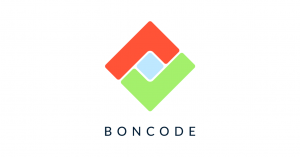Every day, disruptive technologies shake up traditional industries such as banking, financial services, and telecommunications. Part of the reason why new and innovative companies are able to come in and seize market share, is that they’re not heavily burdened with technical debt.
Technical debt has a measurable impact on business operations, hindering your organization’s agility, and its potential to digitally transform. Over time, it can impair your ability to keep up with customer demand for new and improved products and services. For that reason, technical debt needs to be on everyone’s agenda, including the board.
Technical debt explained
Before we dive into the details, here’s a recap of what the term ‘technical debt’ means.
Technical debt is accrued work that is ‘owed’ to an IT system. It’s a normal and unavoidable side effect of software engineering. Teams ‘borrow’ against quality by making sacrifices, taking shortcuts, or using workarounds to meet delivery deadlines.
These sacrifices eventually cause the software to deviate from its prescribed nonfunctional requirements, and in the long-term, they can impact performance, scalability, resilience, or similar characteristics of the system.
Legacy companies and the landscape of technical debt
Accumulating technical debt is an inevitable part of software development. It arises when there’s a conscious decision to sacrifice code quality in order to speed up product delivery.
Over time, large organizations with custom-coded systems naturally accrue technical debt. It’s only when this debt is not properly managed that it can hamper companies in highly competitive markets.
Think about it. If a large, traditional organization – such as a bank – expands, merges, or acquires other legal entities over an extended period of time, its systems can easily become bloated, and overly complex. At the same time, the experts who originally created its legacy custom-coded systems have usually moved on or retired – so vital expertise is lost.
Compare that with innovative startups that are smaller, more agile, and carrying far less technical debt. Typically, these companies deliver services on a single, scalable, cloud platform using the latest technologies designed to meet the requirements of today – and not those of the previous century.
Over time, by continuously adding new technologies to keep up with ever-changing customer needs, many legacy organizations have built up a mountain of technical debt. Years of acquisitions and integrations with new technologies make it difficult to quantify and address technical debt, without losing ground on newer, fresher, competitors.
When reducing technical debt, the message to shareholders is that to compensate for the past and become a competitive company again, for a period of time resources must be allocated to refactoring and not dividends. That’s because the corresponding clean-up operation requires a huge investment in talent and technology.
Gain fact-based insights into technical debt
Software managers and other technical specialists have to make decisions around custom-coded software. Sometimes those choices create technical debt. There’s nothing wrong with that per se.
The problem is that those people, who recognize and understand technical debt, are not in a position to influence the direction of the company. They need to communicate the importance of addressing certain aspects of technical debt, in a way that board members will understand.
For that reason, it’s important to assess and monitor software quality and technical debt so it doesn’t hinder innovation and competitiveness. Thankfully, consultancy-based tools from BonCode enable organizations to prioritize refactoring based on risk. We help in two ways:
- We provide an independent, fact-based assessment of your source code. Our dashboard makes it easy for technical specialists and non-technical board members to have a conversation about software quality, identifying areas where technical debt presents a high risk to the business, and prompting the necessary action.
- Ongoing monitoring of software quality allows us to provide customer-specific insights into technical debt. Today’s custom software is the legacy software of tomorrow. By continuously monitoring custom code, you can leave it in great shape for the next generation.
To discover more about maintaining competitiveness by managing the burden of technical debt, speak to a specialist today. Contact us





